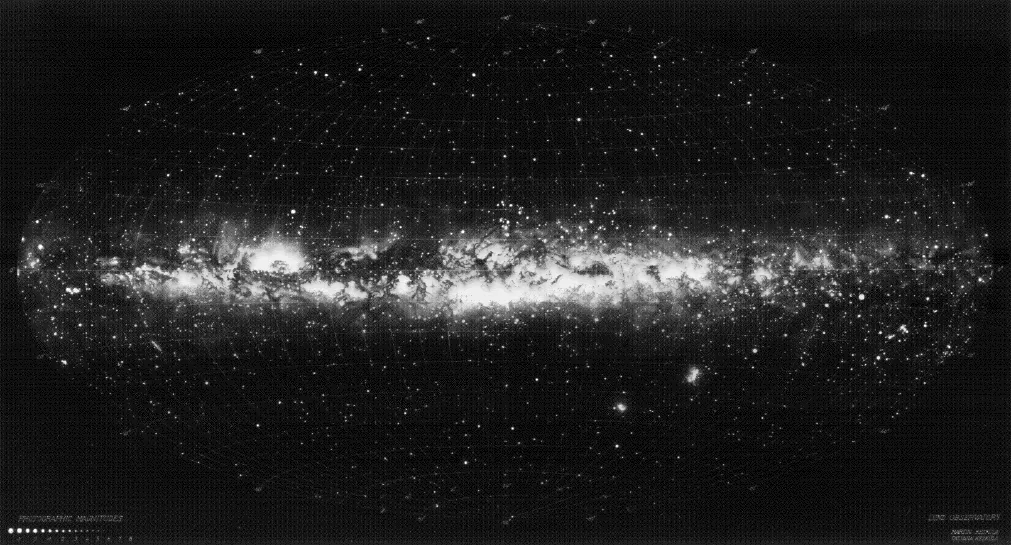Milky Way Panorama
In the beginning of the 1950's, prof Knut Lundmark at Lund Observatory suggested a stylish Milky Way panaroma in an Aitoff projection of the sky. With support from Hierta-Retzius fond and Kungl. Fysiografiska Sällskapet i Lund, the engineers Martin Kesküla and Tatjana Kesküla painted a metre map showing the galactic coordinates, 7000 stars, and the Milky Way in this very projection.

NOTE: This image above is not intended for publication. If you would like to use the picture, please eva [at] astro [dot] lu [dot] se (contact Lund Observatory) and ask for permission. Once approved we will provide you with a high-resolution scan.
The computation of coordinates, the drawing of the coordinate grid and the marking of the star positions have been carried out by Martin Kesküla, while the drawing of the Milky Way clouds themselves has been made by Tatjana Kesküla. The appearance of the Milky Way was created by spraying the fainter regions with a retouching sprayer and by brush painting of the brighter regions. When the picture was ready, the compass drawn stars appeared as unnaturally sharp points in comparison with the more realistic "hand worked" background of the Milky Way. Thus, it was necessary to diffuse the stars using the same painting method as was employed for the Milky Way. During the work with the Milky Way regular checks were made by superimposing a transparent paper marked with the Pannekoek isophotes.
The work took almost two years, and was completed in 1955. The final beautiful piece of art (measures 1x2 meters), still belonging to Lund Observatory, has become well known to astronomers all over the world from countless reproductions.
The scientific point of such a projection of the sky lies mainly in the fact that observable phenomena of different peculiarities frequently are found distributed symmetrically relative to the Via Galactea, the Milky Way, both for natural reasons concerning objects belonging to our galaxy (also known as the Milky Way), and because gas and dust along the Via Galactea obscures the objects behind.
Of course, this all-sky survey distorts the constellations as we are used to see them. However, starting from left we find constellations Auriga and Perseus, and the bright parts in Cassiopeia and Cepheus. The large dark parts of Cygnus and Aquila can be recognized somewhat to the left of the centre, where Sagittarius is found. Towards right from the centre, the Milky Way passes in order Centaurus, Crux, Carina and Canis major. The weaker parts further to the right are Monoceros and Gemini, and farthest to the right we touch Auriga again. In the lower half of the map, we can easily recognize the Large Magellanic Cloud, and relatively far to the left, just below the Milky Way, the Andromeda nebula, known as a galaxy similar to our own, can be seen.

